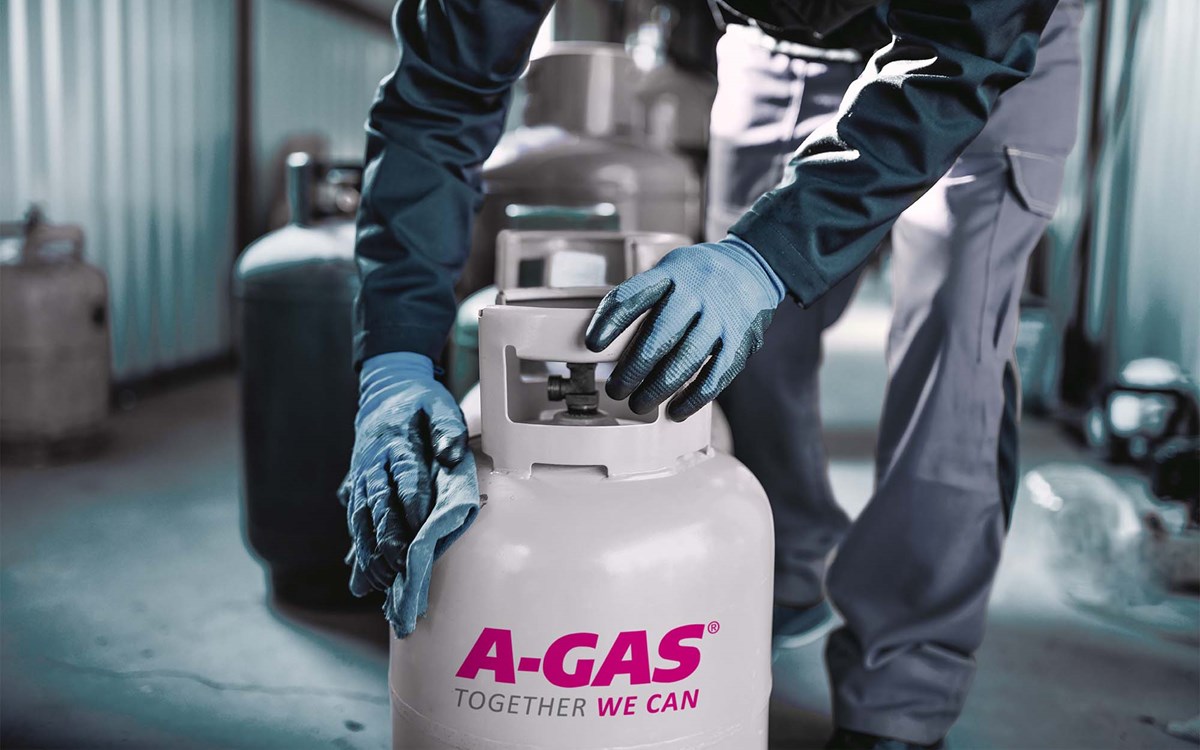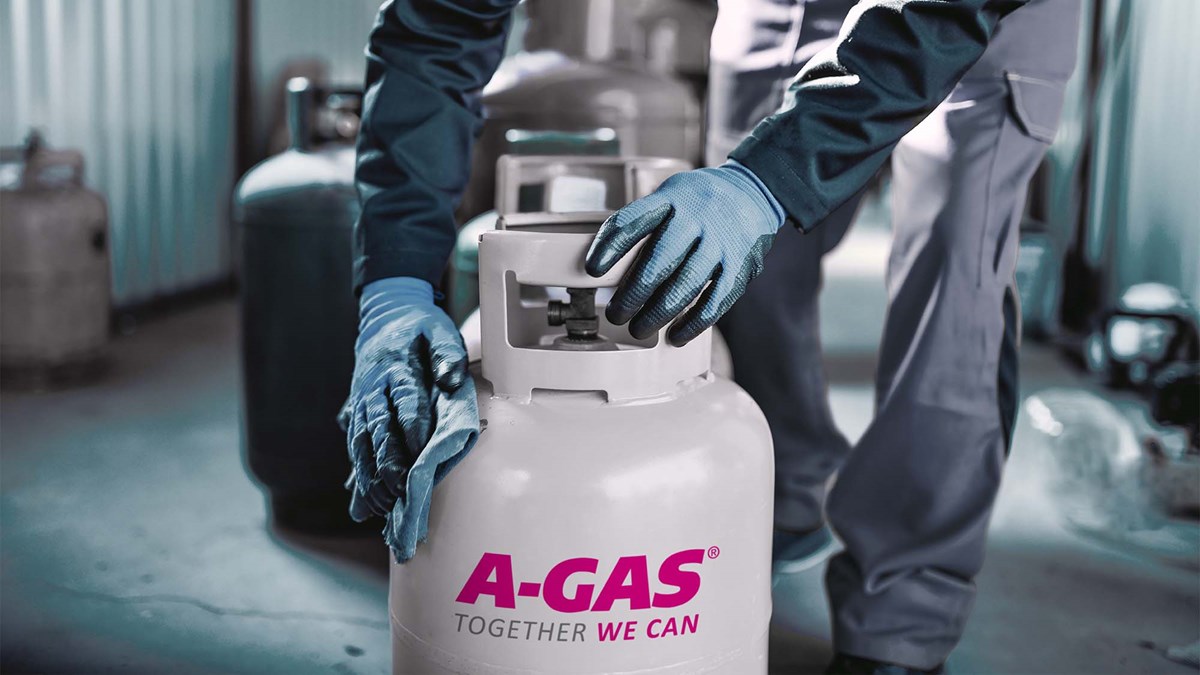Retrofitting Low GWP Refrigerants in Supermarket Systems
A‑Gas Managing Director, John Ormerod, offers advice on switching from R404A to a lower GWP refrigerant in a supermarket system.

R404A, one of the most widely used refrigerants in the industry, has rarely been out of the headlines recently. R404A, with a GWP of just under 4000, has been hard hit by the F‑Gas phasedowns and this year’s 37% cut in the quota for the production of virgin gases is having a major effect in more ways than one. Prices for R404A rose steeply last year as the market reacted to the phasedowns and the focus was on getting users to move away from high GWP products.
Supermarkets up and down the country are the forefront of change in refrigerant use. Many have seen the F‑Gas train coming down the track and are responding to the demands of the phasedowns but there are still those who have yet to make the switch to a low GWP alternative. For managers of refrigeration plants who are in the process of making the change – or have yet to do so – there is no need to panic.
Yes, you will need to switch at some point, but do you need to make that change today? In short, the answer is no. R404A is still available for use and helps to relieve the pressure of retrofitting to an alternative, but when you are ready to opt for a low GWP refrigerant there are a number of important considerations to take into account.
Approaching a retrofit
The system must have similar operating characteristics to R404A in terms of being a medium or low temperature replacement. To achieve this, you must match the refrigeration capacity as closely as possible with the lowest GWP refrigerant available. The industry should banish the word drop-in because there really is no such thing. With the introduction of any replacement refrigerant an adjustment will have to be made to the system to get the best out of it – let me emphasise it is not a case of simply dropping it in.
Choose the right retrofit refrigerant
Your refrigerant supplier will be able to help you in the selection of the most appropriate refrigerant for the system and you should consult with the equipment manufacturer too before making a final decision. There are several suitable retrofit refrigerants on the market – R407F is a medium GWP option but Opteon XP40 (R449A) and Solstice N40 (R448A) offer a lower GWP alternative. They are currently the lowest GWP replacements on the market (around 1400) and are closely matched to R404A in terms of refrigeration capacity.
Record the amount of refrigerant recovered
It is a key aspect of the retrofit to discover what the system has been running on beforehand. It is also important to record the quantity of refrigerant put in or taken out of the system to satisfy the obligations of the F‑Gas Regulations. Online reporting tools like Gas‑Trak Online™ (GTO) from A‑Gas make this easy. They allow engineers to cut down on paperwork by producing electronic F‑Gas log books and reports.
Dispose of the old oil from the compressor
An oil change is a vital part of a refrigerant retrofit. Getting rid of waste oil, especially small quantities, has traditionally been a problem for engineers. Remember that this old oil can contain refrigerant – so safe storage and responsible disposal is key. A‑Gas offers an oil disposal service through its wholesale partners to take care of recovered oil.
Getting the right charge size
To avoid any problems with a retrofit, first measure the operating conditions. This includes discharge, suction pressures, suction line temperature, compressor amps and superheat before using the liquid sight glass as a guide. Follow the refrigerant manufacturer’s recommendation regarding initial charge size before making adjustments to the system. Use dew point pressure as a reference in determining the appropriate temperature for a superheat setting. To determine the saturated temperature for a sub-cooling calculation, use bubble point pressure.
The importance of leak testing
Leak detection is a key part of ensuring that the F-Gas Regulations do achieve what is expected of them. If a system doesn’t leak, it won’t require topping up, and this in turn helps the industry meet the phasedown under F-Gas. A retrofit, with the gas out of the system, is a great opportunity to raise the bar on this.
Making sure a system doesn’t leak has never been more essential and this will clearly save the customer money in the long run. The route to success is to follow best practice, so relying on pressure, vacuum decay or using bubble spray won’t be enough.
Technologies like Trace-A‑Gas® from A-Gas can provide a high tech and economical solution. Using a suitable detector, this method is 100 times more sensitive than bubble spray. Leaks can be detected in the smallest quantities and very quickly.
Monitor the system performance
This is a crucial part of a retrofit and you should start monitoring while the system is still running on R404A by recording the typical running conditions. All the standard system operating parameters should be checked to establish the benchmark temperatures and pressures.
Don’t forget the labelling
Not only must you record the amount of refrigerant in the system, but you should record what the GWP is and its CO2 equivalent value. GTO from A-Gas has a handy calculator which can make this a quick and easy task. As the regulations progress it is likely that we are going to have many different types of refrigerants available – so labelling has never been more relevant. It is also important for engineers to know exactly what’s in a system. Generic F-Gas refrigerant tape is available to allow systems to be labelled with all of the required information.
Disposing of the old refrigerant responsibly
This is a legal obligation because it is classed as hazardous waste. Under the F-Gas phasedown it is crucial that as much old refrigerant as possible is recovered, reprocessed and made available to the market. You can be sure that reclaimed refrigerant is going to play a major part in keeping the supply chain moving.
A-Gas has invested heavily in reclamation and recovery and this has been reflected by the building of a new gas separator in Portbury and the launch of the A-Gas Rapid Recovery business in the UK. This bespoke, F-Gas compliant refrigerant recovery service offers high recovery rates – approximately ten times faster than traditional recovery units.
And finally
I hope these tips on retrofitting will prove helpful if you haven’t made the switch to a lower GWP gas yet. If you do get stuck contact your refrigerant supplier for advice. They have the expertise to ensure that your retrofit goes as it should.
